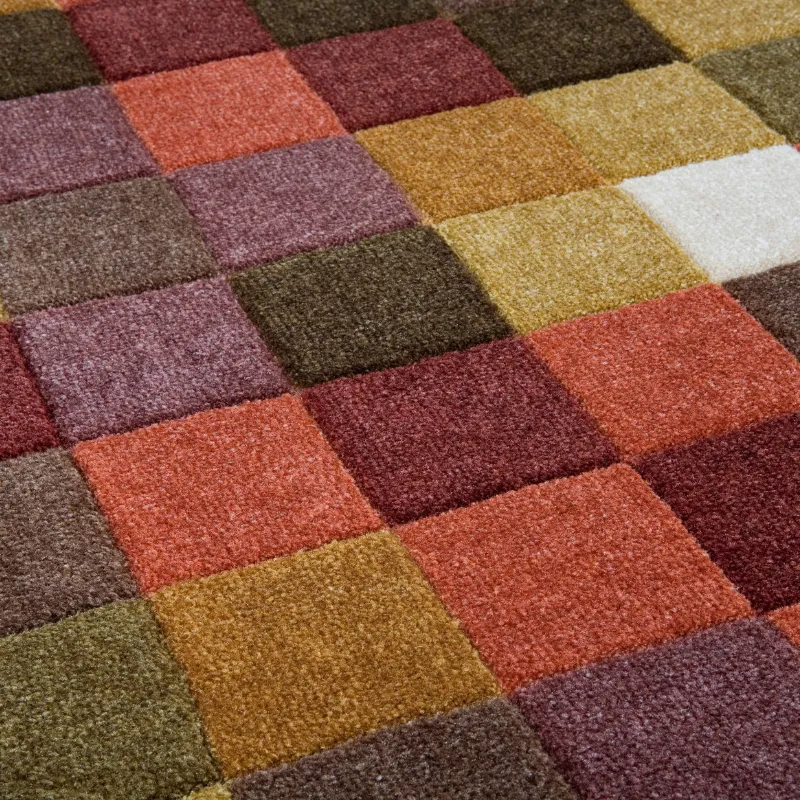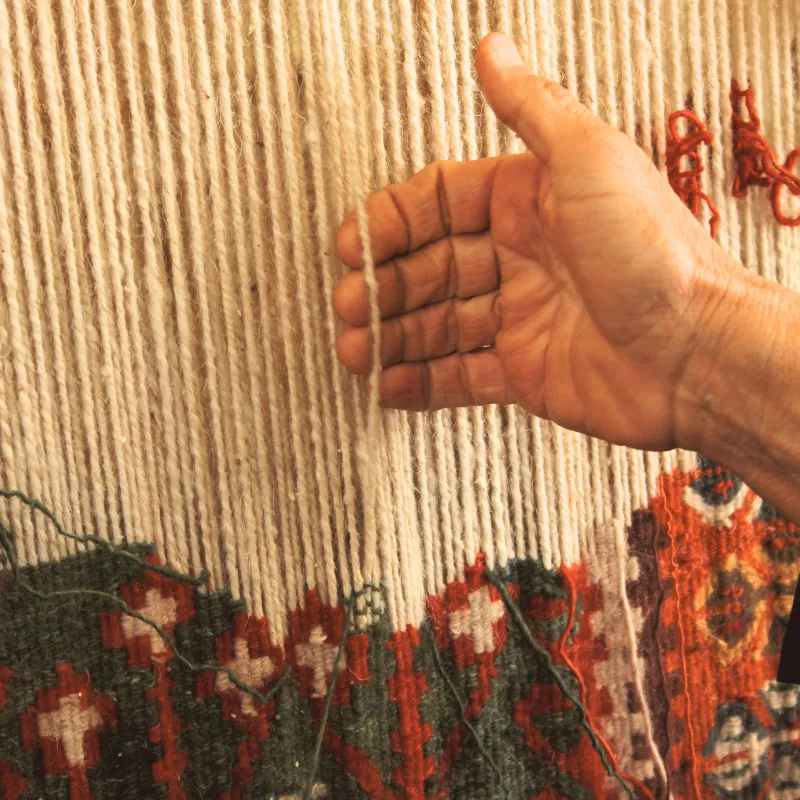One of the most vital factors to consider when choosing...
The Luxury Carpet Guide: Identifying Quality and Elegance
- scvfloorsmith
- carpeting
- The Luxury Carpet Guide: Identifying Quality and Elegance

Carpet trends may come and go, but luxury never goes out of style. Luxury carpets are the epitome of quality, elegance, and comfort, and this luxury carpet buying guide is written to help with identifying carpet quality in a clear, practical way. With premium luxury carpet materials and time-honored weaving techniques, these carpets provide timeless beauty that savvy homeowners cherish. This luxury carpet guide acts as a high-quality carpet guide and carpet choosing guide, designed to help you understand materials, construction, and style so you can make a confident choice for your home.
Dating back to the stunning silk hand-woven carpet and silk rugs of Asia and Persia and the luxury Berber carpets of Morocco, the Silk Roads brought these exquisite works of art to Europe. Each rug tells a story about the artisan’s culture and spirituality, which is still reflected in today’s luxury carpet stores and the most sought-after luxury carpet brands. Whether it’s luxury wool carpet brands, luxury silk carpet, or luxury synthetic carpet made from high-end synthetic fibers, our carpet quality guide and carpet choosing guide reveal the secrets to selecting high-quality, luxurious carpets for your home.
Identifying High-Quality Materials – Your Carpet Quality Guide
Luxury carpeting comes in a wide variety of materials, including premium natural silk, wool, and high-end synthetic fibers. This section acts as your carpet quality guide so you can compare natural carpet materials with synthetics and choose the best carpet for each room in your home.

Silk Rugs
Silk is a luxurious material with a distinct sheen and a thinner thread that requires high knot density for luxury silk carpet and silk rugs. This makes the manufacturing process more labor-intensive, elevating the price. Premium silk fibers provide a refined look and feel. Silk’s durability and beauty make it worth the investment, as you’ll enjoy silk carpets for life with proper care. However, silk is not as durable as wool and synthetics and is more likely to show wear and discoloration when placed in higher-traffic areas or exposed to the sun. For a careful carpet choosing guide, use silk in carpet for formal spaces with lower foot traffic.

100% Wool Carpet
Wool is plush and soft underfoot, with long-lasting durability and a highly textured look that reduces the appearance of marking, shading, and compression. As a result, it is one of the most trusted luxury wool carpet options, and true 100% wool carpet is considered a natural wool carpet with excellent luxury carpet durability. Wool offers comfort, warmth, and beauty. While wool is more affordable than silk in most cases, it is more expensive than many other materials. Natural oils resist dirt and oil-based spills, helping with luxury carpet stain resistance, and making wool naturally fire-resistant. Wool is hypoallergenic and holds onto dust and debris better than other materials, releasing fewer allergens into the air. On the downside, wool is highly absorbent and not resistant to water-based spills such as wine, making it more vulnerable to water-based stain vulnerability. A good carpet buying guide will recommend wool for bedrooms, living rooms, and spaces where comfortable luxury carpet and warmth are a priority.

High-End Synthetic Fibers
High-end synthetic fibers such as nylon and polyester are more cost-effective, stain-resistant, and highly resilient to handle more foot traffic. These luxury synthetic carpet options, including nylon luxury carpet and polyester luxury carpet, are known for strong carpet resilience and overall carpet durability. Synthetic rugs are also available in a rainbow of colors, weaves, textures, and designs, making them more suitable when you want to match a specific color scheme. In any modern carpet choosing guide, high-end synthetics are often suggested for carpet for high-traffic areas such as busy hallways, stairs, and family rooms where durability and easy maintenance are essential.
Weaving Techniques and Their Impact on Carpet Quality
Luxury rugs are typically made using the following three weaving or construction techniques. Understanding these methods is an important part of any luxury carpet buying guide and carpet quality guide because they influence durability, price, luxury carpet aesthetics, and overall appearance. These are key luxury weaving techniques that directly affect rug construction quality.

Hand-Knotted Rugs
This labor-intensive rug-making technique ties individual knots to the yarns running the length of the rug to form a distinctive design. Quality is judged by high knot density rugs and the complexity of the design, which increases the knot count and value. Material impacts knot count. For example, a high-quality silk rug requires at least 300 to 500 knots per square inch, while the thicker fibers of wool would be between 100 and 300. Authentic hand-knotted rugs include a decorative fringe that is part of the foundation and sides that are hand-wrapped around the edges.
Different regions use different knots. For example, the Persian Senneh knot is asymmetrical, creating detailed, intricate patterns for a smoother, finer texture suited to lower-traffic areas of the home and more formal rooms. On the other hand, the Turkish Ghiordes knot is symmetrical, wrapping the yarn around two adjacent threads, creating a stronger rug that can withstand heavier traffic and become a true plush luxury carpet in busy areas.

Tufted Rugs
Tufted rugs are created using loops of yarn pulled through a backing material. The loops are then sheared to create the pile. This is less labor-intensive than hand-knotted rugs, making them more affordable. However, the material used will dictate the look and price of the rug. Wool tufted rugs offer a higher-end look and softer feel underfoot, so they cost more than synthetic tufted rugs. Wool also holds its shape better, with a natural resilience that allows it to spring back to its original shape following compression, enhancing overall luxury carpet texture and carpet abrasion resistance.

Woven Rugs
Woven rugs are produced on a loom, weaving the horizontal yarns over and under the vertical yarns. Although still done by hand, machine-woven rugs are also available today. There is a distinct difference in price and appearance between hand and machine-woven rugs, with hand-woven rugs costing more. Machine-woven rugs are smoother and more consistent, while hand-woven rugs have a distinctly crafted look that is coarser. Woven rugs are also highly durable, making them a good choice for carpet for high-traffic areas and an important option to consider in any carpet buying guide focused on luxury carpet durability and long-term value.
The Aesthetic and Functional
Benefits of Luxury Carpets
Luxury carpets have the status and appeal of high-quality hardwood floors. When you want to enhance the comfort and aesthetics of your home, luxury carpets bring a unique look to any space and showcase standout luxury carpet aesthetics. Available in an endless variety of colors, textures, weaves, and designs, they play a critical part in your home’s design scheme and should always be included in your carpet choosing guide as premium carpet weaves with timeless carpet style and elegant carpet appearance.
Several functional benefits add to the appeal of luxury carpets, including:
Luxury carpets for bedrooms and upper floors help absorb sounds when someone walks overhead.
They offer insulating qualities to help maintain comfortable home temperatures.
Luxury carpet in living rooms and throughout the home are by far the most comfortable flooring underfoot.
The plush pile (especially wool) reduces the chance of injury, making it ideal for homes with small children.

Maintenance and Care for Luxury Carpets
You can enhance the life of your luxury carpets with these tips on proper care and maintenance. Any reliable carpet quality guide, carpet buying guide, or luxury carpet maintenance resource should include simple aftercare steps like these to support long-term carpet durability and carpet longevity care tips:
- Use a vacuum once a week to remove debris that can increase wear on delicate fibers—one of the most important basics of luxury carpet care.
- Act fast when a spill occurs, first blotting with a clean cloth to try to absorb as much liquid as possible to aid in carpet stain removal.
- Follow up with a material-appropriate carpet cleaner if a stain remains.
- Never use a cleaning product that is not suited to the material to ensure delicate fiber protection.
- Test a less noticeable area of the rug to check colorfastness when using cleaning products—an essential carpet colorfastness test step.
- Have your carpet professionally deep-cleaned once or twice a year by experts in professional carpet cleaning.
- Only use trusted professionals specializing in luxury carpets for advanced luxury carpet maintenance.
Never apply harsh chemicals to your luxury carpet, as they will cause discoloration and damage fibers; always avoid harsh chemicals carpet products that are not tested for your specific material.
Luxury carpet brands offer endless possibilities for every room in your home. From luxury shag carpet to deep pile luxury carpet, you are sure to find a look you’ll love. Use this luxury carpet buying guide, along with this simple carpet choosing guide to make confident decisions that balance beauty, luxury carpet durability, and long-term value for every premium surface in your home.
Further Reading: Related Blog Post Topics
Eco-Friendly Carpet Installation • SCV Floorsmith • Palatine, Calabasas, and Nearby
Eco-Friendly Carpet If you’re looking for eco-friendly carpet installation or...
The Importance of Durability and Maintenance in Carpet Choices
When it comes to carpeting, flooring durability and carpet maintenance...



